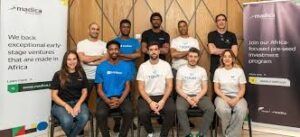When Anything AI hit $2 million ARR in its first two weeks, Footwork’s Nikhil Basu Trivedi led an $11 million round at a $100 million valuation with Bessemer, Uncork, and M13 following within 72 hours. The speed wasn’t FOMO. It was recognizing a fundamental flaw in vibe-coding’s first-wave winners.
Basu Trivedi’s thesis is pointed: Lovable and Replit “excel at developing prototypes but struggle to enable users to launch production-ready software.” That’s not a feature gap—it’s a business model vulnerability.
Most vibe-coding tools generate code but offload infrastructure to third parties like Supabase. Users still need to cobble together payments, storage, and hosting. For non-technical builders, that’s a deal-breaker.
Anything built everything in-house: databases, payments, hosting, the full stack. Users are already launching revenue-generating App Store apps—a habit tracker, CPR training course, hairstyle try-on tool. That’s not prototype metrics. That’s product-market fit.
A 50x ARR multiple ($100M on $2M ARR) makes sense when you examine the TAM shift. Replit and Lovable target developers. Anything targets anyone building a digital business, the Shopify playbook for the app economy.
If Anything maintains even half its launch velocity, it hits $5-6 million ARR by year-end, positioning for a $200-300 million Series A in Q1 2026.
Three critical questions emerge:
Infrastructure Completeness: Can your vibe-coding portfolio companies add backend faster than Anything improves code generation? History says adding infrastructure is harder.
Customer Overlap: If your thesis assumed segmentation (developers vs. entrepreneurs), Anything’s traction tests that assumption.
Consolidation Timing: The market’s $300M+ collective ARR suggests either massive TAM or impending M&A. Strategic acquirers—Shopify, Salesforce, Adobe—all need AI coding capabilities.
Watch retention cohorts, production deployment rates, and whether revenue concentrates among power users or distributes across small businesses. The difference determines if this is Category Creation or a well-timed launch spike.
When four sophisticated investors move simultaneously on a two-week-old company, they’re seeing something structural. In AI-native categories, infrastructure completeness creates more durable moats than pure model performance. And that changes everything.








